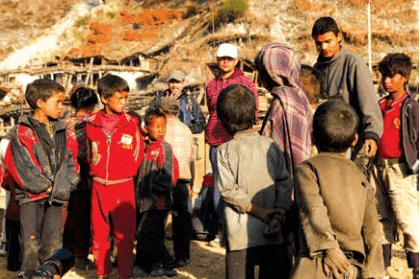
Nepal: A sleeping elephant?
Delivering his speech in the first edition of Tourism & Aviation Next 2013 conference held in Kathmandu last September, Amitabh Kant, who is credited for leading the successful “Incredible India” campaign, said Nepal in many ways is unique. “However, it’s like a sleeping elephant for Nepal. And it signifies the gap between the performance and potential.”
Given the depressing reality, opinions such as, “We have not moved a single step ahead since the end of Maoist insurgency”, abound in local media. In their second or third visit here, many foreigners, including Chinese people who visited Nepal about 10 years ago, often sign with a feeling, “Nepal is marking time.”
With the new Constituent Assembly (CA) slated for November 19 around the corner, it is high time for Nepal to understand the huge challenges between potentials and performance, to check what is making an alluring country out of joint and to find a way out to move ahead. These issues, fundamental and quite beyond the realm of partisan consideration, must be resolved on the plan of national interest.
China was once a sleeping lion. The French hero Napoleon long ago said, “Let her sleep, for when she wakes she will shake the world.” About 200 years later, China is now fully awake, like an energetic lion or dragon reshaping the world including its close neighbor Nepal.
Chairman Mao Zedong once wrote, “So many deeds cry out to be done, and always urgently. The world rolls on, Time presses. Ten thousand years are too long, seize the day, seize the hour!”
Wake up, Nepal. The slaughterhouse of failure is not your destiny. An immobile republica fails to show your dignity. Only a paltry amount of your muscles do you flex. Feed yourself, and keep yourself alive. This is not where Nepal belongs. Nepal deserves better.
A Gap List
Brain drain & high unemployment
Population of 16-40 age groups in Nepal accounts for 38.8 percent of the total population. But according to a press release issued by Association of Youth Organization Nepal (AYON), youth migration has reached an average of 1500 per day. At the same time, with around 450,000 people joining the labor market every year, Nepal’s unemployment rate may be approximately 50 percent now.
Hydroelectricity
Nepal has approximately 40,000 MW of economically feasible hydropower potential. However, Nepal has developed only approximately 600 MW of hydropower, only about 40% of Nepal’s population has access to electricity.
Agriculture
Despite having an economy dominated by agriculture, where more than 80 percent of the total population rely on agriculture for their livelihood, Nepal imports most of the food stuffs from neighboring countries India and China.
Himalayan herbs
Nepal is also famous for herbal products. Himalayan region of Nepal is home to about 3500 species of herbs and aromatic plants. Many rare and endangered Himalayan herbs are found in higher altitudes of Nepal’s Himalayan region. About 80% population in the developing countries relies on herbal remedies. The total herbal drug market is estimated to be US $ 100 billion and expected to grow to US $ 5 trillion by 2050. The estimated annual growth rate of herbal medicines is expected to be 5-15%. Can Nepal occupy a significant world market in this sector?
141st in corruption index
Nepal is ranked in the 141st place among 176 countries in the Corruption Perceptions Index (CPI), according to Transparency International (TI), a global corruption watchdog. According to a TI report, Nepal has a score of 27 in CPI. The score of zero is perceived as highly corrupt and 100 as the least corrupt. Afghanistan and Bangladesh are the only South Asian countries that are more corrupt than Nepal in the region.
Gender gap
According to the recall of Nepali Congress President Sushil Koirala in Chitan on October 25, 2013, the late BP Koirala had said he would make all Nepalese equal in 15 years, but the Global Gender Gap Report 2013 released by the World Economic Forum on the say day says, Nepal is ranked 121st among 136 countries across the world in terms of gender gap, improving only two positions from 123rd in 2012.
Air service
Nepal has signed bilateral air service agreements with 36 countries since 1963, which provides 5.7 million seats per annum to and from Nepal. However, less than 40 percent of this capacity is being utilized. At present, only 27 international airlines are operating flights from the capital Kathmandu to 22 cities in Asia and Europe.
(This article was published by the 4th edition of APD newspaper in 2013)


